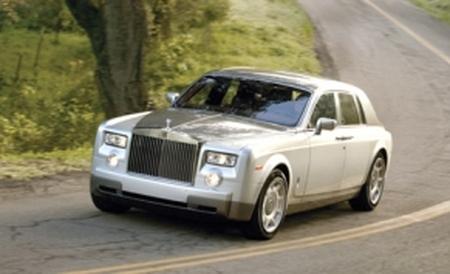If Sir Henry Royce and the Hon. Charles Rolls had foreseen a day when stewardship of the world’s most prestigious nameplate would pass to a company headquartered in Munich, they might have rethought their careers. But worse things could have happened. The Bayerische Motoren Werke has a respectable track record as a steward of hallowed British marques, first with the Range Rover and then the Mini. Why not Rolls-Royce?
Why not, indeed. The BMW Group acquired the Rolls-Royce name in July 1998 after a byzantine tug of war with Volkswagen AG. What BMW got was a legendary name, pretty shopworn. But here we are, contemplating the first car to emerge under the new regime. In just four years, BMW has produced an all-new car in an all-new factory.
The new Phantom seems well conceived to restore some of that faded glory, a blend of traditional luxury and contemporary hardware that propels Rolls from expensive anachronism to automotive respectability. A Rolls is still expensive, of course: about $320,000, built to order.
The inner Phantom is a hefty aluminum space frame that supports body panels fabricated from aluminum and composites. The obvious goal was mass reduction, but at 5600 pounds, the Phantom is no wraith. That’s a function of size: 229.7 inches on a 140.6-inch wheelbase, longer in both dimensions than a Ford Excursion. It’s not the heaviest Rolls sedan on record, but it is the biggest, ranking between the new Maybach 57 and 62.
The Phantom uses an unequal-length control-arm front suspension and a multilink setup at the rear loosely based on the BMW 7-series. Both are bolted to steel subframes, and there are air springs at all four corners, with automatic load leveling and computer-controlled dampers.
Propulsion-provided by a 453-hp direct-injection DOHC 48-valve aluminum V-12 mated to a ZF six-speed automatic gearbox-is also borrowed from the 7-series. The V-12 was expanded to 6.7 liters, with a long intake manifold to enhance torque. Peak torque-531 pound-feet-comes on at 3500 rpm, but 75 percent of it is on tap at a mere 1000 rpm, just the prescription for overcoming the inertia that goes with this kind of cetacean mass.
Rolls-Royce forecasts a 0-to-60 sprint of 5.7 seconds, which seemed plausible after a day of California coastal driving. The top speed of Euro models is 149 mph. On U.S. cars, Rolls plans to substitute all-season versions of the Michelin PAX System run-flat sport tires used elsewhere that will limit top speed to 130 mph.
View Photos
View Photos


Leave a Reply